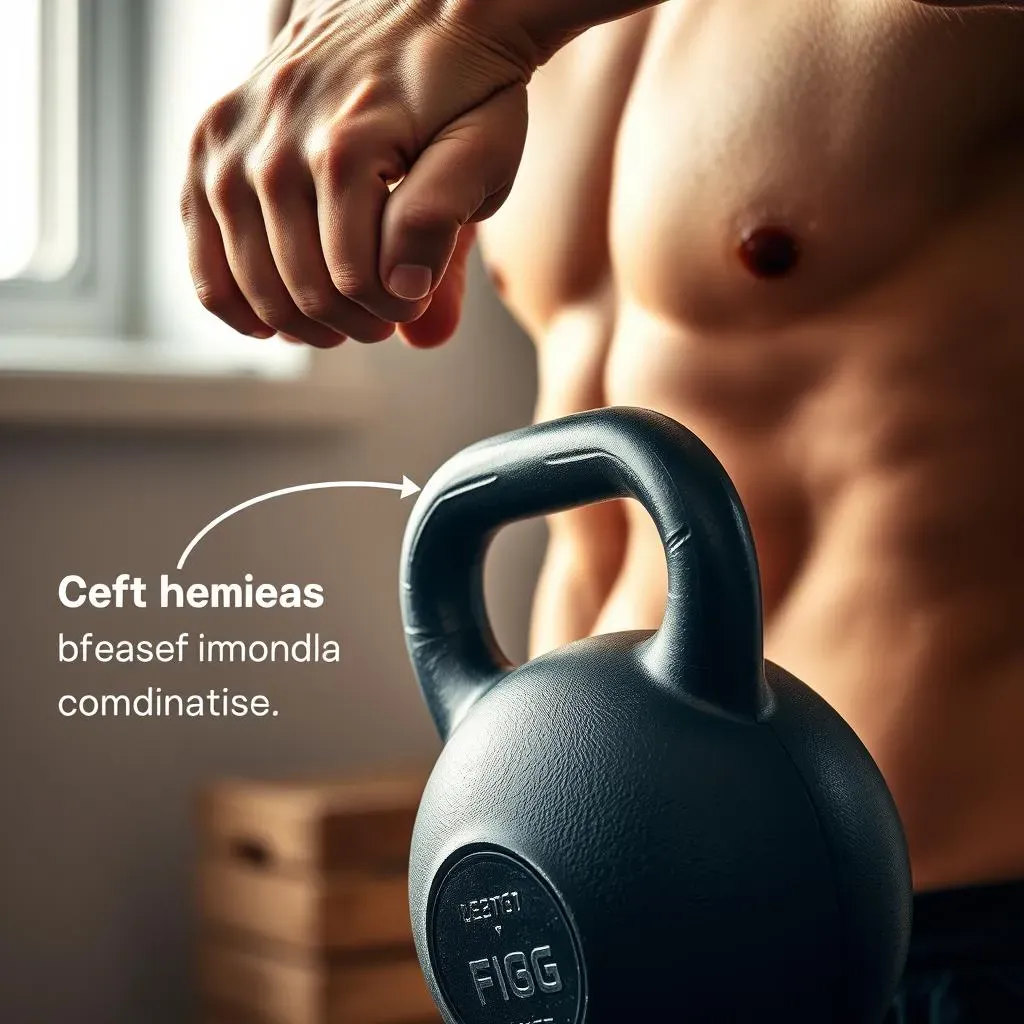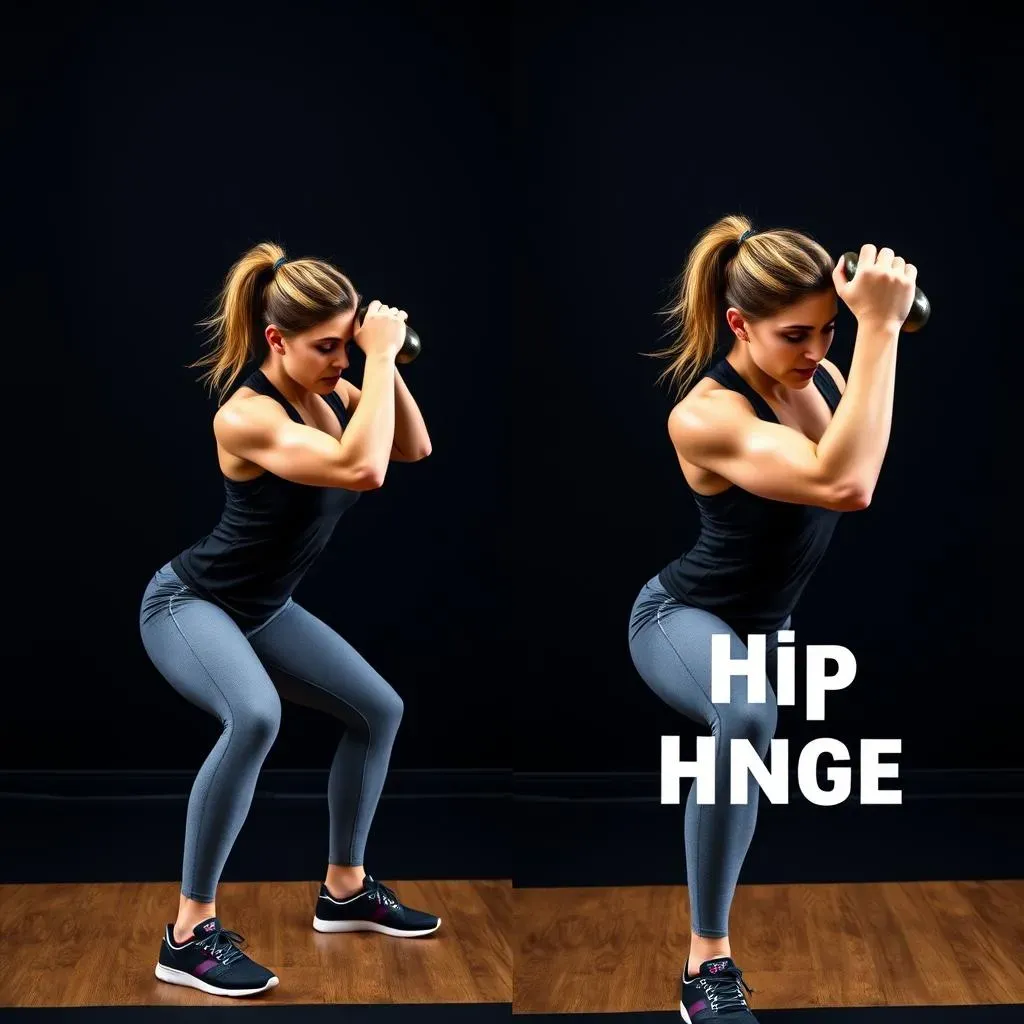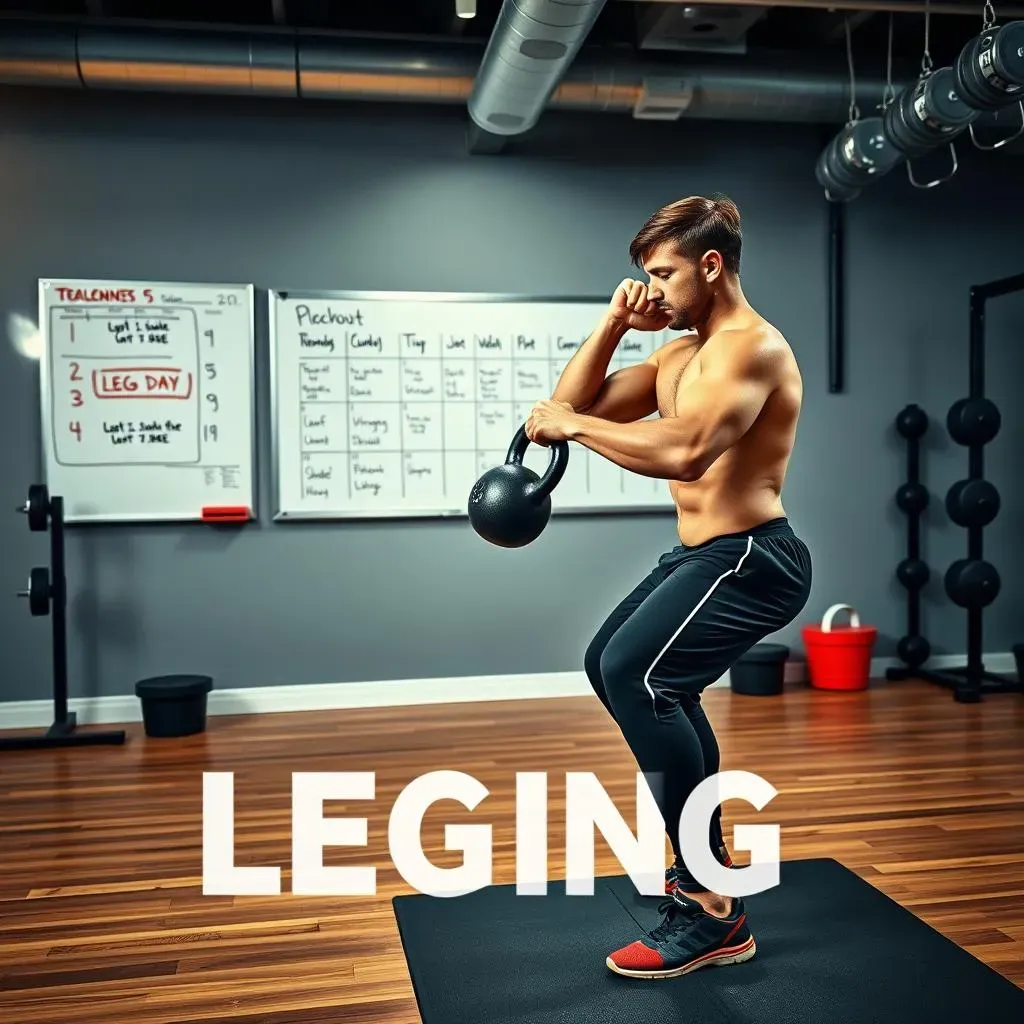Table of Contents
Ready to transform your leg day? Forget those boring gym machines; it's time to grab a kettlebell! I've always been a fan of how versatile these cannonball-shaped weights are, and when it comes to leg workouts with kettlebells, the possibilities are endless. In this article, I'm going to share my passion for kettlebell training and show you exactly how to build powerful, sculpted legs. We'll start by exploring why kettlebells are such a fantastic choice for lower body work, and then we'll jump into the nitty-gritty – the exercises themselves. I'll guide you through proper form, common mistakes to avoid, and how to create a routine that fits your fitness level. Whether you're a beginner or a seasoned lifter, prepare to discover new ways to challenge your legs and achieve incredible results with these simple, yet potent tools. Let's get started!
Why Choose Kettlebells for Leg Workouts?

Why Choose Kettlebells for Leg Workouts?
More Than Just a Weight: The Kettlebell Advantage
Okay, so you're thinking about leg day. You've probably seen the usual suspects – barbells, dumbbells, maybe some fancy machines. But let me tell you, kettlebells bring a whole different vibe to the party. They're not just weights; they're like a dance partner for your muscles. The offset handle forces your body to work harder to stabilize, which means you're not just building strength, you're also improving your balance and coordination. I love how they challenge you in a way that feels natural and, dare I say, fun. It's not just about lifting heavy; it's about moving with intention and control.
Think of it like this: a barbell is a rigid line, while a kettlebell is a dynamic curve. That curve forces your muscles to adapt, making your workouts more effective and engaging. I find it a great way to get out of the usual routine and add a new level of difficulty to my workout. It’s like going from driving a car to riding a bike – different, challenging, and ultimately, more rewarding.
Functional Fitness at its Finest
What I really appreciate about kettlebells is how they translate to real-world movements. Unlike some gym exercises that isolate specific muscles, kettlebell leg workouts engage your entire body. When you're doing a kettlebell swing, you're not just working your hamstrings and glutes; you're also firing up your core, back, and even your shoulders. It’s a full-body party! This makes you stronger in everyday life, whether you're carrying groceries, climbing stairs, or chasing after your dog. It's about building functional strength, not just show muscles.
I remember this one time I was helping my neighbor move furniture and I was able to lift and carry a heavy sofa almost effortlessly. It was a moment of pure "aha!" for me, when I realized that the kettlebell exercises I'd been practicing weren't just making me stronger in the gym; they were making me stronger in life. This kind of functional fitness is what makes kettlebells so appealing.
Benefit | Description |
|---|---|
Full-Body Engagement | Works multiple muscle groups simultaneously, not just legs. |
Improved Balance | The offset weight challenges stability and coordination. |
Functional Strength | Builds strength for real-world activities. |
Variety & Fun | Adds a dynamic element to your workouts. |
Protecting Your Back While Building Strength
Okay, let's talk about something we all worry about: back pain. Many traditional leg exercises can put a lot of strain on your lower back, especially if you have poor form. But here's the cool thing about kettlebells: they can actually help protect your back while you build leg strength. The fluid, natural movements encouraged by kettlebell exercises promote better posture and core engagement, which are crucial for spinal health. Think about a kettlebell swing – it's a hip hinge, not a back bend, and that's a huge difference.
I’ve found that using kettlebells has actually helped me improve my posture throughout the day, and my back feels much stronger and more resilient. I'm not saying it's a magic bullet, but when done correctly, kettlebell exercises can be a great way to strengthen your legs without putting unnecessary stress on your spine. It's like having a built-in back support system while you train.
Essential Kettlebell Leg Exercises: Form and Technique

Essential Kettlebell Leg Exercises: Form and Technique
The Mighty Kettlebell Swing
Alright, let's get down to the exercises. First up, the king of kettlebell movements: the swing. This isn't just about swinging a weight; it's about mastering a powerful hip hinge. Imagine you're trying to close a car door with your butt – that's the feeling you want. Keep your back straight, your core tight, and let your hips do the work. The kettlebell should feel like an extension of your arms, not something you're lifting with your shoulders. It's all about that explosive power from your hips, sending the bell up in a smooth arc.
I know it might feel a bit awkward at first, but trust me, once you get the hang of it, you'll feel like a total powerhouse. Think of your body as a hinge, not a crane. Many people make the mistake of squatting down, but the movement should be a hinge at the hips. Keep your eyes focused ahead, and let the momentum of the swing dictate the movement, rather than trying to muscle the bell up. It is important to start with a lighter weight to really nail the form before you go heavier.
Goblet Squats: Your New Best Friend
Next up is the goblet squat. This exercise is fantastic for building leg strength and improving your squat mechanics. Hold the kettlebell close to your chest, like you're hugging a precious baby. Then, squat down, keeping your chest up and your back straight. Try to get your thighs parallel to the ground, or as low as you comfortably can. The kettlebell acts as a counterweight, helping you maintain good posture and balance. It's like having a built-in coach, guiding you into a perfect squat.
One thing I often see is people leaning forward too much, which puts unnecessary stress on the lower back. Remember, it's a squat, not a bow! Keep your core engaged, and focus on pushing through your heels as you stand back up. I like to do these in front of a mirror sometimes, just to check my form. It’s a great exercise to not only strengthen your legs, but also to improve your overall squatting technique, which benefits you in other exercises as well.
Exercise | Key Focus | Common Mistake |
|---|---|---|
Kettlebell Swing | Hip hinge, explosive power | Squatting instead of hinging |
Goblet Squat | Upright posture, deep squat | Leaning forward, rounding back |
Building a Complete Kettlebell Leg Workout Routine

Building a Complete Kettlebell Leg Workout Routine
Crafting Your Leg Day Plan
Okay, so you've got a few kettlebell moves under your belt. Now, let's talk about putting it all together into a solid leg workout. I think the key here isn't just throwing random exercises together; it's about creating a balanced routine that hits all the major muscle groups in your legs. Think of your leg muscles like a team – you've got your quads, hamstrings, glutes, and calves, and they all need to play their part. A good routine should incorporate exercises that work each of these areas, and also include some compound movements, like swings and squats, that engage multiple muscles at once. It's like conducting an orchestra, making sure each instrument is playing its part to create a beautiful symphony of strength.
I usually start with a dynamic warm-up, such as leg swings and bodyweight squats. Then, I move into the main workout, which consists of 3-4 exercises, doing 3 sets of 8-12 reps for each. I try to vary the exercises to keep things interesting and to challenge my muscles in different ways. For example, one day I might focus on squats and lunges, and the next day I might do deadlifts and swings. It really depends on how I'm feeling and what I want to focus on. The best part about kettlebells is that you can make these small adjustments to keep your body guessing and keep your workouts fresh.
Sample Kettlebell Leg Workout
Alright, let’s get specific. Here's a sample routine that I often use, and it's a great place to start if you’re not sure where to begin. Remember, this is just a suggestion; feel free to tweak it to fit your fitness level and goals. I always recommend starting with a lighter weight to perfect your form and then gradually increasing as you feel stronger. Don’t try to be a hero on day one; slow and steady wins the race. The key is consistency and good form, not how much weight you can lift.
I always like to finish up with some static stretches, holding each stretch for about 30 seconds. This helps improve flexibility and reduces muscle soreness. Also, I always listen to my body, if something hurts I stop immediately. It is important to remember that the goal is to get stronger and healthier, not to get hurt. A good workout should leave you feeling challenged and energized, not exhausted and in pain. Here’s the sample workout routine:
Exercise | Sets | Reps | Rest |
|---|---|---|---|
Kettlebell Swings | 3 | 10-12 | 60 seconds |
Goblet Squats | 3 | 8-10 | 60 seconds |
Kettlebell Lunges | 3 | 10-12 per leg | 45 seconds |
Romanian Deadlifts | 3 | 8-10 | 60 seconds |
Advanced Kettlebell Leg Workout Variations and Progressions

Advanced Kettlebell Leg Workout Variations and Progressions
So, you've mastered the basics and you're looking for a new challenge? Awesome! That's where the real fun begins. I'm talking about taking those fundamental kettlebell exercises and cranking them up a notch. Think of it like leveling up in a video game; you've got your base skills, now it's time to unlock some special moves. We're not just going to be adding more weight; we're going to explore different variations that target your muscles in new and interesting ways. It's all about pushing your boundaries and seeing what your body is truly capable of. I love this part of the journey because it’s where you really start to see how far you've come and how much further you can go. It’s a constant exploration of your strength and resilience.
One of my favorite ways to progress is by adding an element of instability. For example, instead of a regular lunge, try a reverse lunge with a kettlebell held overhead. It immediately engages your core and challenges your balance. Another great variation is the single-leg deadlift, which is a fantastic way to improve your stability and hamstring strength. Remember, the goal isn't just to lift heavier, but to lift smarter. It’s about being intentional with every rep and focusing on the quality of your movement. It’s like becoming a master craftsman; you’re not just building, you’re refining your technique to perfection.
Progression | Description | Benefit |
|---|---|---|
Overhead Lunges | Lunges with a kettlebell held overhead. | Increased core engagement and balance. |
Single-Leg Deadlifts | Deadlifts performed on one leg. | Improved stability and hamstring strength. |
Jump Squats | Squats with an explosive jump at the top. | Increased power and explosiveness. |
Pistol Squats | Single-leg squat. | Ultimate leg strength and balance. |
I also like to play around with tempo. Slowing down the eccentric (lowering) phase of an exercise can really fire up your muscles and increase time under tension. For example, during a goblet squat, try lowering yourself down over 3-4 seconds, then exploding back up. This method forces your muscles to work harder and can lead to greater strength gains. It's like adding a turbocharger to your workout; you're not just going through the motions, you're maximizing the impact of every single rep. And don’t be afraid to experiment with different rep ranges and sets. Sometimes, a higher rep range with lighter weight can be just as effective as a low rep range with heavier weight. It’s all about finding what works best for your body and your goals. It’s like being a scientist in your own gym, constantly testing and adjusting to find the perfect formula for success.
Don't forget the importance of variety. Once you feel comfortable with a particular variation, it’s time to mix it up again. Try adding plyometric movements, like jump squats or lunge jumps, to increase your power. Or experiment with different stances, like a wider sumo squat or a narrower stance. The key is to keep challenging your body in new ways, so you don’t plateau and you continue to see progress. I really believe that fitness is a journey, not a destination, and there are always new challenges waiting just around the corner. It’s like exploring a vast landscape; there's always something new to discover, and that’s what makes it so exciting.